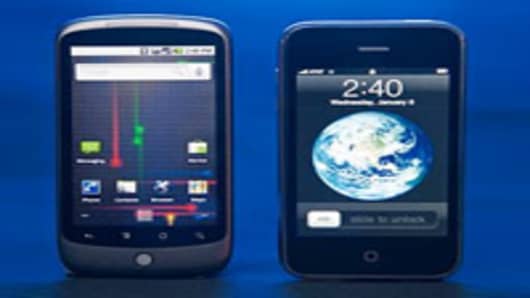As Chief Technology Officer of Cisco , Padmassri Warrior is all business. But you could detect a hint of giddiness in her voice on Wednesday, as she was extolling the virtues of Cisco's new CRS-3 router.
"It can download the entire Library of Congress in one second," she told me during a live interview on CNBC's "Street Signs."
This is certainly a nifty application, but not all that practical—once you've downloaded all those books, you'll probably be too busy reading to do anything more with your $90,000 router.
Of course, the most important benefit of the CRS 3 is spelled out in the company's press release: "Every man, woman and child in China could make a video call, simultaneously."
Not that there's much likelihood of that happening either, but it does get to the central issue at this year's CTIA Wireless Expo: An explosion of mobile devices and data has created a near-insatiable appetite for capacity.
Ralph de la Vega, the CEO of AT&T Mobility and—for this year—the Chairman of CTIA, knows the issue all too well. As the exclusive carrier for Apple's iPhone, AT&T has been dogged by complaints about spotty service and dropped calls.
"We are working on it," he told me in an interview Wednesday on "The Call," suggesting the company has worked through most of the initial issues (a company spokesman told me the capacity problems are almost exclusively in the New York and San Francisco areas, where AT&T is focusing on beefing up its infrastructure. And Cisco says AT&T is among those testing that new router.)
De la Vega told me AT&T knew the iPhone would be popular, but didn't anticipate the thousands of downloadable applications or "apps" for iPhone that are straining the system. There are worse problems to have of course, but even as AT&T tries to get on top of that one, the demands for capacity are only growing.
During our live interview (which you can watch here), de la Vega showed off a remote control panel for your home that works wirelessly, as well as a wireless pill bottle that can alert your doctor if you haven't taken your medication, can order a refill when it senses your perscription is running low, and can provide new conspiracy theories for opponents of the new national health care law (don't worry--it's still just a concept).
The point is that wireless is no longer just about phones, and that means even more demand for capacity. As head of CTIA, de la Vega is pushing a multi-faceted approach: the industry applauds the FCC's proposed new broadband strategy, which seeks to turn over parts of the spectrum previously used by broadcasters to be used for wireless data. But the plan didn't go as far as the industry wanted, so that means there's a need for more coordination and improved technology, as carriers battle over the next generation of networks.
Consider the fact that there are now 12 million subscribers to mobile video services. That's a fact I learned when I moderated a CTIA panel on mobile video, which has clearly moved beyond the "gee whiz" stage.
Participants on the panel included representatives of some of the biggest content providers out there: Sony Pictures, Disney/ESPN , and National Geographic, among others.
After a long period of trial and error—some of which is still going on—they're finding a robust appetite for mobile video. Some of it is essentially TV-to-go: Tim Connolly, VP of mobile and digital distribution for Disney and ESPN, said they are having great success with live events like the NCAA basketball tournament, which is practically made for mobile video. News networks—including CNBC—are in demand as well. We're among the many live channels on FloTV, a mobile video service backed by Qualcomm that already uses part of the broadcast spectrum.
But mobile video on demand is hot too. Imagine downloading a feature film onto your high definition smartphone just before you get on a plane. Sony Pictures and National Geographic were also represented on the panel, as was the aforementioned AT&T which is distributing much of this content.
All the participants acknowledged they're still figuring out how to make money with this, and dealing with copyright and licensing issues. But you can bet they'll get past that, which means that even after you've downloaded the entire Library of Congress, that new router won't go to waste.



